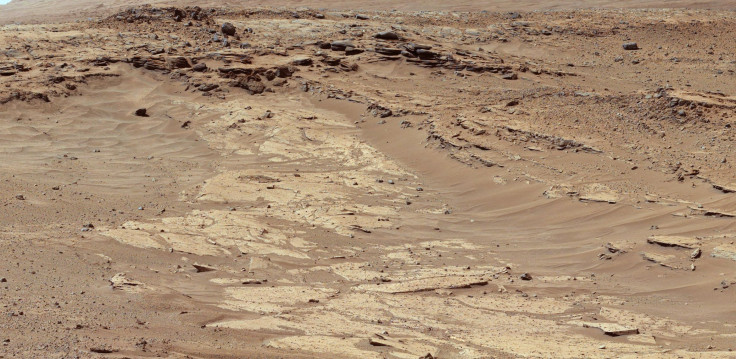Next Stop For NASA Curiosity Mars Rover Will Be ‘The Kimberley,’ Analyze Erosion-Resistant Sandstone
NASA’s Curiosity Mars rover is making its way toward Mount Sharp but will make a research stop at an area known as “the Kimberley.” This rock outcrop features sandstones, something Curiosity hasn’t observed yet during its time on Mars.

Ashwin Vasavada, Curiosity Deputy Project Scientist from the Jet Propulsion Laboratory, said in a statement, “he contrasting textures and durabilities of sandstones in this area are fascinating. While superficially similar, the rocks likely formed and evolved quite differently from each other.”
The analysis of Martian sandstone by Curiosity will lead to new insights into the planet’s ancient environment. The sandstone at the Kimberley features a lot of variation and the composition, the material that is found within the rock along with sand, can differ greatly from sandstone to sandstone.
“A major issue for us now is to understand why some rocks resist erosion more than other rocks, especially when they are so close to each other and are both likely to be sandstones,” said Michael Malin, principal investigator for the Mast Camera and the Mars Descent Camera on Curiosity, in a statement. For the researchers, the composition of the sandstone can help determine the type of environment, including how wet it once was, notes NASA.
Curiouser & Curiouser! Rolling up on my next science waypoint for a closer look at these odd rocks. pic.twitter.com/MizQNCzXro
— Curiosity Rover (@MarsCuriosity) March 25, 2014After more than a year on Mars, Curiosity has had few setbacks but researchers have been concerned about the rover’s tires as there were more holes and dents than expected. Curiosity has a long road ahead of it as it heads toward Mount Sharp but NASA is not too concerned over the wear and tear of the rover's tires. The rate of new holes has decreased and recent tests with a test rover at JPL indicate Curiosity's tires can sustain far more damage and perform well. The space agency will remain cautious and try to plan routes that limit rough terrain.
To date Curiosity has been busy analyzing mudstones to much success, notes NASA. At the site known as Yellowknife Bay, Curiosity found evidence of an ancient lakebed that “may have been favorable for microbial life.”
© Copyright IBTimes 2024. All rights reserved.












